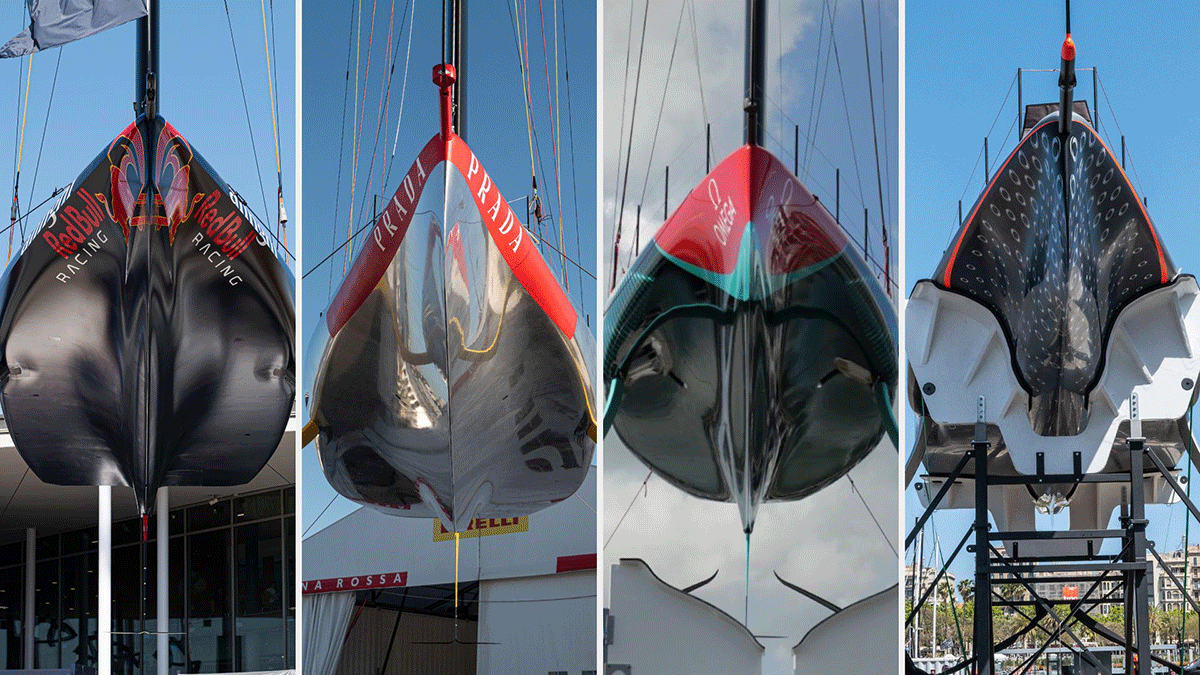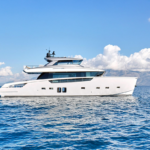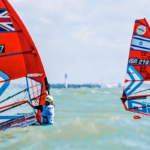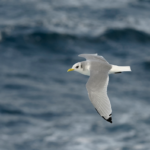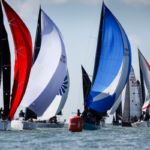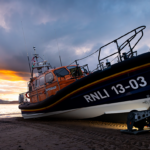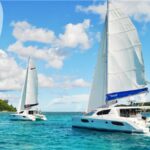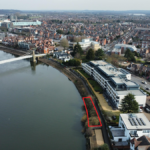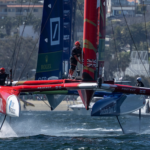As the Louis Vuitton 37th America’s Cup nears, the intensity ramps up and with four teams revealing their box-fresh AC75s, it’s abundantly clear that different solutions have been found for very similar questions.
The design teams have worked feverishly to deliver their best and latest thinking whilst the electronics and mechatronics engineers have been hard at it to produce the control and power-delivery systems that will define each team’s campaign. So what do we know so far?
With three teams sailing, what we are seeing is fast-flight being achieved by a combination of Barcelona-specific hull design and clever-thinking on controls. For Emirates Team New Zealand and Luna Rossa Prada Pirelli, we are only seeing a fraction of their potential, shorn as they are with legacy foils and foil arms. That will change. The performance however of Alinghi Red Bull Racing has everyone sitting up and taking notice with the team running full-span bespoke foils which clearly have an enormous effect on performance.
Hull differences and bustle treatment are more nuanced. Easy to say that Emirates Team New Zealand and Luna Rossa Prada Pirelli are from the same stable of progressive thinking, so too perhaps INEOS Britannia, but Alinghi Red Bull Racing has thrown a spanner in the works with their chine on the bow and full length, considerable, bustle leading to the stern.
All the teams have gone for T-section shapes at the stern run-off but it’s in the bow area where the differences are most marked. INEOS Britannia have real volume in their in-built immediately voluminous bustle, whereas the Italians and Kiwis have aggressively flared bow profiles back to the foil arm boxes.
The deck area is key. For anyone that has seen an overlaid flow diagram of an AC75, the biggest disturbance air passing over the yacht is at deck level and it’s here where designers and technicians have worked the hardest. The Italians have a beautifully contoured naked carbon approach, moulding the side pods evenly into the deck and aft off the transom. Emirates Team New Zealand does the same with a raised ellipse stern that screams aero.
Alinghi Red Bull Racing has detail from bow to stern with what look like Venturi bumps on the bow to aid airflow into the jib and then an incredibly open cockpit that creates something of a tunnel with the raised pods having internal sidewalls rather than blended in an aggressive treatment of the flow. INEOS Britannia, from early morning spy shots, appears to be somewhere in the middle of the Italians and Swiss with blended side pods streaming aft – we will know more when they officially launch in the coming days.
Bumps and both hull and deck dilets are evident on all designs but perhaps the biggest differences lie in the treatment of the bustles and skegs that run down the middle of the boat. What we see on the Swiss AC75 is almost an International Moth style of skeg whilst for the Kiwis and Italians they have a more blended, considerate approach.
Emirates Team New Zealand’s bustle runs full length, kicking up in the final third to the transom allowing for the rudder to be hung beneath the bustle. Its angularity is marked, similar in fact to the sharpness of INEOS Britannia’s treatment although their bustle stops a few feet from the transom tip, meaning the rudder mechanics are mainly all above deck.
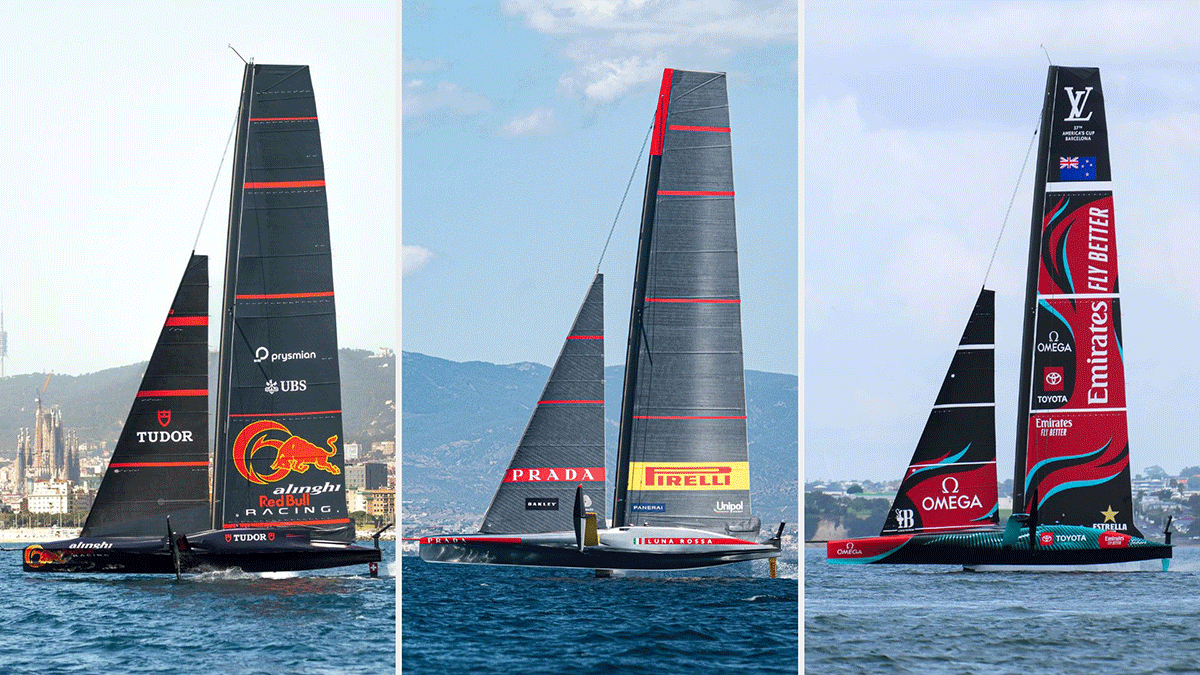
The Swiss have considerable volume at the stern in their bustle with the added benefit of getting those rudder controls low and hidden. Same too for Luna Rossa Prada Pirelli whose refined bustle goes full length and again has the rudder slung off the underbelly. All the boats so far have a keel chine running off the bow with varying degrees of depth.
Another similarity so far, appears to be in crew configuration with everyone so far going for the trimmer in the forward pod, followed by the helmsman and then the two cyclors in the aft. A screen on the forward pod of Alinghi Red Bull Racing confirms their aero intention whereas for the other trimmers, it’s just a very low position out of the wind that they maintain.
Same too for the cyclors, the power units of this Louis Vuitton 37th America’s Cup. They are arched into an almost time-trial position with their heads down in the ‘pain-locker’ pedalling for all they are worth – rarely do you see a cyclor look up when the boats are in motion.
In terms of sail control, we can see that all the teams have gone for trench configurations on both their jib track and mainsheet track but there’s a world of difference and new thinking going on here. Emirates Team New Zealand have innovated once again and removed all of their control componentry below the aft deck to produce a very neat dual control system that auto-varies side to side and gives them ultimate control over both skins of the mainsail. Jib systems all look to be sunken 3D controls mounted on self-tacking tracks and all the teams have been seen linking up mast rotation to the mainsheet system. Pre-sets will become defined as the teams ramp up their time on the water, making these AC75s some of the most refined and setting-repeatable boats ever created, placing much emphasis on the data for given wind conditions.
One of the closely guarded areas of development is the foil design. Emirates Team New Zealand and Luna Rossa Prada Pirelli have both opted at launch to keep their designs secret and complete the commissioning of their boats on legacy foils. Alinghi Red Bull Racing, however, did not have this option and what we saw at their launch was a first iteration of the long-span, low volume foils that are beautifully sculpted with almost invisible dual flaps and upturned wing tips. Designed for super-fast flight and early foiling, we’ve already seen the Swiss get airborne in just 6.5 – 7.5 knots of breeze which is an impressive performanceupgrade on the first-generation boats.
INEOS Britannia revealed their boat but kept their new foils shrouded until launch but what we can certainly see is the trend for back slung foils off a slender bulb – expect this to be the norm but whether will we see innovations here such as ‘Tubercles’ like the Swiss trialled on their LEQ12 moded AC40 or something different, is the big question that won’t be answered for some time yet.
The clock is ticking to the start of the Louis Vuitton 37th America’s Cup and time is the great enemy of every campaign. All the teams will want to be on the water as much as possible now, refining and getting their AC75s up to a race-pace that they hope will be enough to secure victory. The closest America’s Cup in living memory is upon us. It’s now all in the details and with NYYC American Magic and Orient Express Racing soon to reveal their masterpieces, Barcelona is undoubtedly the centre of the sailing world. With only a few months left, it’s all to play for and the ultimate price of the America’s Cup awaits the team that can execute from here on in.








